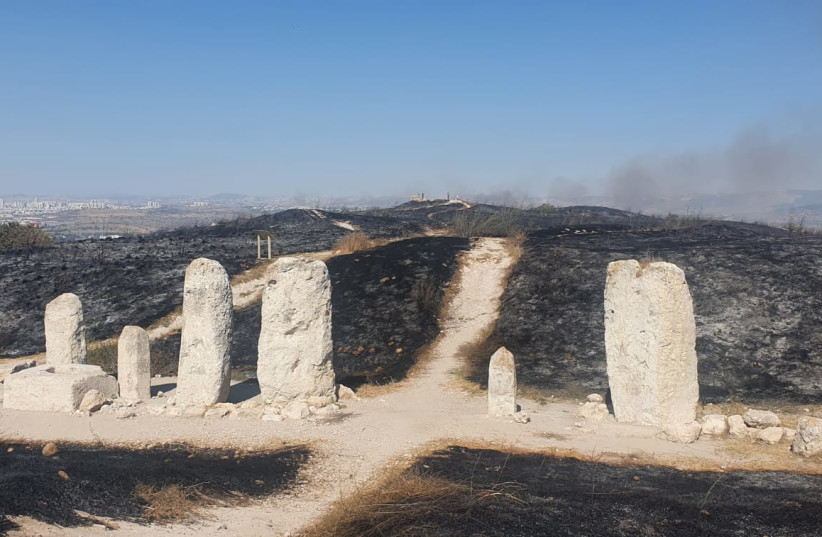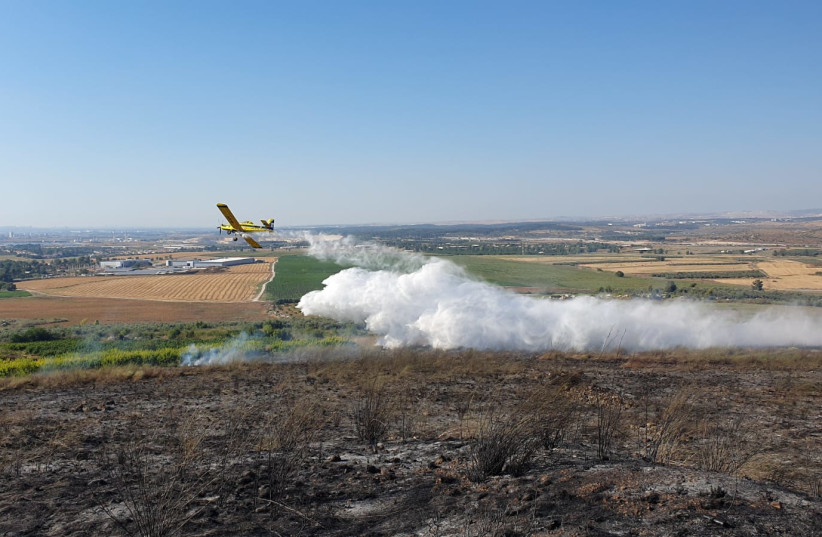 Israel to fund NIS 4 million restoration of burned Tel Gezer archaeological site
Israel to fund NIS 4 million restoration of burned Tel Gezer archaeological site
JERUSALEM POST STAFF
Large areas of Tel Gezer were burned by fire which spread from agricultural areas of the nearby moshav Beit Uziel earlier in July.
.

The Tel Gezer National Park in the Shfela region, a popular archaeological site that went up in flames earlier in July, will be restored at the cost of NIS four million, the Israeli government announced on Sunday.
Large areas of Tel Gezer were burned by fire which spread from agricultural areas of the nearby moshav Beit Uziel. Fortunately, no irreversible damage was done to the antiquities at the site, according to the Israel Nature and Parks Authority (INPA).
Yet, Prime Minister Yair Lapid, Construction and Housing Minister Ze’ev Elkin and Tourism Minister Yoel Razbozov have all pitched in from the budgets of their respective ministries’ for the restoration of the archaeological site.
In the aftermath of the fire, INPA Sharon regional director Roee Shtrauss called for the restoration and conservation of Tel Gezer. “We will need to restore and clean the antiquities which have been burnt, but we need to do a more thorough study of the situation in order to better determine what needs to be done,” he said.

Shtrauss assembled a restoration and conservation team to assess the damage to some of Tel Gezer’s most important archaeological findings, including the ancient Caananite water system of Gezer.
Gezer was a prominent fortified Canaanite city-state in the Middle Bronze Age. The archaeological site covers an area of about 13 hectares (32 acres), and includes 26 settlement layers dating from the Chalcolithic period to the Early Roman period, from 3500 BCE to 100 BCE.
Thankfully, he reported no damage was done to the water works, the largest of such Canaanite systems discovered to date.
A “swift and immidiate responose”
Raya Shurki, INPA director-general, thanked Razbozov and Elkin after the two came to Tel Gezer to “see for themselves the extent of the fire damage,” as the INPA head said. “We will be pleased to invite the public to visit this important archaeological site as soon as the work has been completed.”
“The relevant government ministries have cooperated in order to provide a swift and immediate response for the damage that was caused,” Lapid said. “I hope that the site will re-open in the very near future to visitors and tourists so that we will all enjoy the beauty and heritage of the site once again.”
“Restoring the site following the fire that broke out there – this is our most basic commitment as the government of Israel,” the prime minister added.
“Restoring the site following the fire that broke out there – this is our most basic commitment as the government of Israel”
Prime Minister Yair Lapid
Judith Sudilovsky contributed to this report.
Zawartość publikowanych artykułów i materiałów nie reprezentuje poglądów ani opinii Reunion’68,
ani też webmastera Blogu Reunion’68, chyba ze jest to wyraźnie zaznaczone.
Twoje uwagi, linki, własne artykuły lub wiadomości prześlij na adres:
webmaster@reunion68.com
